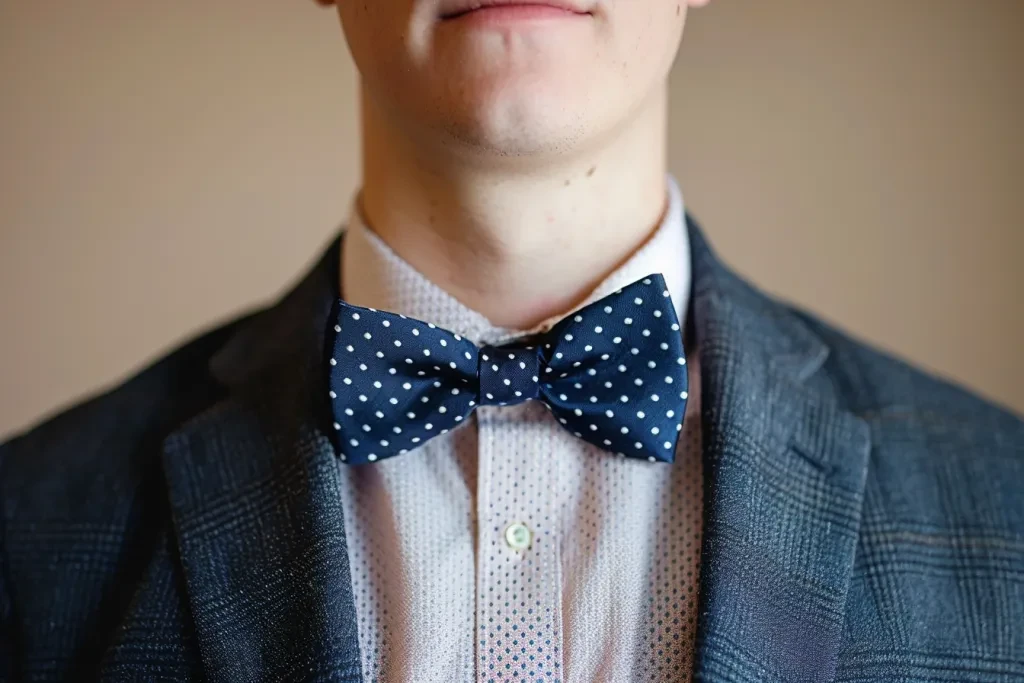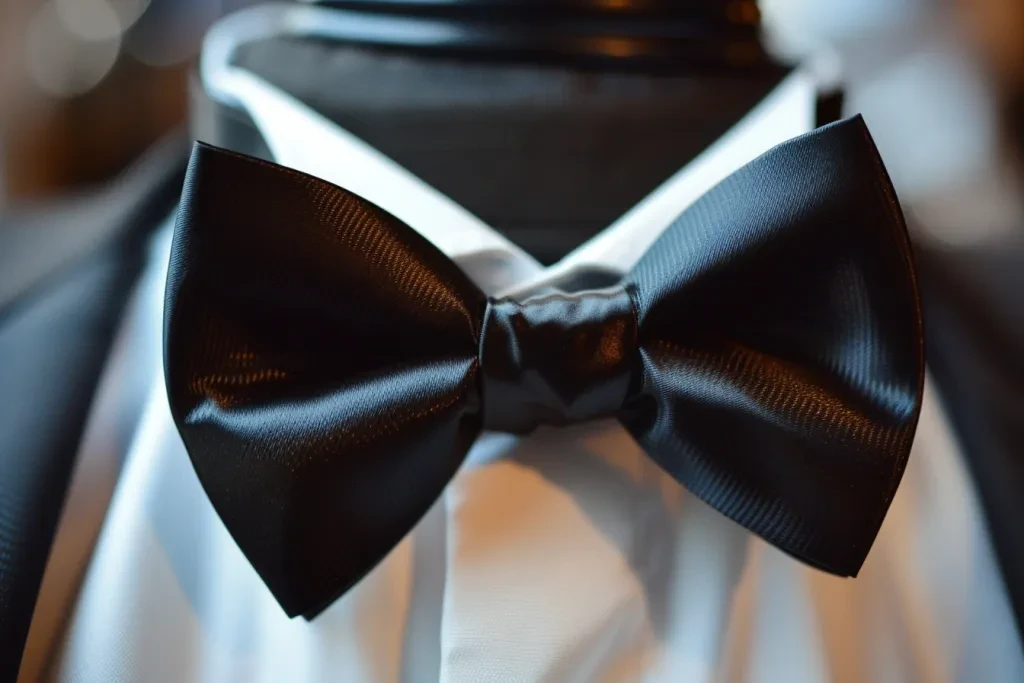The bow tie, often seen as a hallmark of formal attire, carries with it a sense of sophistication and style that transcends fashion trends. This article delves into the essential aspects of bow ties that enthusiasts and newcomers alike should know. From understanding different styles and materials to mastering the art of tying a bow tie and selecting the perfect one for any occasion, we cover the key areas to enhance your bow tie experience. Whether you’re preparing for a formal event or looking to add a touch of elegance to your everyday wear, this guide offers valuable insights into making informed decisions about incorporating bow ties into your wardrobe.
Table of Contents:
– The history and evolution of the bow tie
– Different styles and materials of bow ties
– How to tie a bow tie: A step-by-step guide
– Choosing the right bow tie for the occasion
– Care and maintenance tips for bow ties
The history and evolution of the bow tie

The bow tie has a rich history, tracing back to the 17th century. Initially, it was a functional accessory used by Croatian mercenaries to fasten the openings of their shirts. This practical item evolved into a fashion statement, symbolizing elegance and sophistication. Throughout the centuries, the bow tie has seen various transformations, reflecting cultural and fashion trends. Today, it remains a versatile accessory, worn by people of all ages and genders, signifying not just formality but also a sense of individuality and style.
The evolution of the bow tie mirrors changes in society and fashion. In the 19th century, it became a staple of formal wear, particularly in the form of the black tie. The 20th century saw a diversification in the styles and materials used, making the bow tie accessible for both formal and casual occasions. The modern era has embraced the bow tie, with a resurgence in popularity as individuals seek to express their unique style.
Understanding the history of the bow tie provides context for its current place in fashion. It’s not merely an accessory but a symbol of the wearer’s attention to detail and appreciation for tradition. This historical perspective enriches the experience of choosing and wearing a bow tie, connecting the wearer to a long lineage of style and elegance.
Different styles and materials of bow ties

Bow ties come in a variety of styles, each suited to different occasions and personal preferences. The most common types include the traditional self-tie, the convenient pre-tied, and the adjustable clip-on. Self-tie bow ties, often considered the most authentic style, allow for a custom fit and look. Pre-tied and clip-on options offer ease of use, making them suitable for those new to bow ties or in need of a quick dressing option.
Materials play a crucial role in the appearance and feel of a bow tie. Silk is a popular choice for formal events, offering a luxurious sheen and smooth texture. Cotton and linen bow ties provide a more casual look, ideal for everyday wear or less formal occasions. For those seeking something unique, materials like wool, velvet, or even leather can make a bold statement.
When selecting a bow tie, consider both the style and material in relation to the event and your personal taste. A well-chosen bow tie can enhance an outfit, reflecting your personality and ensuring you stand out in the best possible way. Experimenting with different styles and materials can also expand your wardrobe options, allowing for creative expression through your attire.
How to tie a bow tie: A step-by-step guide

Tying a bow tie may seem daunting at first, but with practice, it becomes a simple task. Start by draping the bow tie around your neck, ensuring one end is slightly longer than the other. Cross the longer end over the shorter one, then bring it under and through the loop around your neck. Form a loop with the shorter end, which will become the front part of the bow. Fold the longer end over the front, creating the shape of the bow. Pull the longer end through the loop at the back of the bow, tightening and adjusting as necessary to achieve the desired look.
Practice is key to mastering the art of tying a bow tie. Don’t be discouraged if your first attempts aren’t perfect. Remember, the charm of a self-tie bow tie lies in its slight imperfections, which add character and authenticity to your appearance.
Visual guides and tutorials can be helpful resources when learning to tie a bow tie. Consider seeking out videos or diagrams that break down the process into easy-to-follow steps. With time and patience, tying a bow tie will become a seamless part of your dressing routine.
Choosing the right bow tie for the occasion

Selecting the appropriate bow tie for an event is crucial in achieving the right look. For formal occasions such as weddings or black-tie events, classic black silk bow ties are the standard. These exude elegance and pair well with traditional tuxedos. When attending semi-formal or business events, consider a bow tie in a solid color or subtle pattern that complements your suit.
Casual settings offer the opportunity to experiment with bolder colors, patterns, and materials. A brightly colored bow tie or one with a unique design can serve as a conversation starter and showcase your personal style. When in doubt, opt for versatility. A medium-sized bow tie in a neutral color or simple pattern can adapt to various outfits and occasions.
The key to choosing the right bow tie is understanding the dress code and context of the event, as well as knowing your comfort level and style preferences. A well-chosen bow tie not only enhances your outfit but also boosts your confidence, making any occasion more enjoyable.
Care and maintenance tips for bow ties

Proper care and maintenance are essential to preserving the quality and appearance of your bow ties. Always follow the care instructions provided, as different materials may require specific cleaning methods. Silk bow ties, for example, should generally be dry cleaned to maintain their texture and color. Cotton and linen bow ties can often be hand washed or machine washed on a gentle cycle.
Storing your bow ties correctly is also important. Hang self-tie bow ties loosely or roll them up to prevent creasing. Pre-tied and clip-on bow ties can be stored flat in a drawer. Avoid over-crowding to prevent wrinkles and damage.
Regular maintenance, including gentle ironing or steaming to remove creases, will keep your bow ties looking their best. Investing time in the care of your bow ties ensures they remain a cherished part of your wardrobe for years to come.
Conclusion:
The bow tie, with its rich history and diverse styles, offers a unique opportunity to express personal style and elegance. Understanding the different types, materials, and occasions for wearing a bow tie, as well as mastering the art of tying and caring for them, can enhance your dressing experience. Whether for a formal event or casual outing, the right bow tie can elevate your outfit, reflecting your attention to detail and appreciation for tradition. Embrace the versatility and timeless charm of the bow tie to make a statement in any setting.




